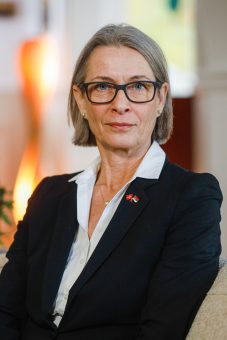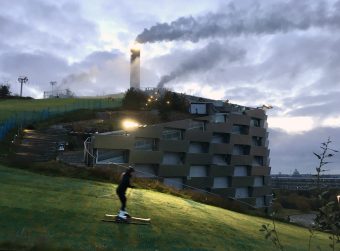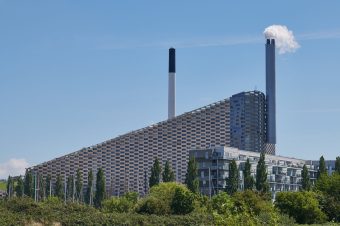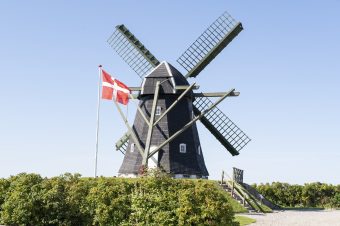
Meet the smallest country in Scandinavia. In it, almost every resident, and there are 5.8 million of them, not only owns a bicycle but also rides it every day, and 11,000 km of bicycle paths are at their disposal. In its capital, during the summer, you can see bathers cooling off in the crystal-clear sea water in the nearby harbor. As if the multitude of islands that this country is proud of were not enough, they decided to create new, very special, energy islands. To that, they added climatic and ecological parks. We present to you the green achievements of the Kingdom of Denmark through a conversation with Susanne Shine, the ambassador of this country in Serbia.
EP: The Kingdom of Denmark ranks first in the EPI list (Environmental Performance Index). Does the progress in preserving the environment and nature affect the strengthening of the feeling of happiness since the Kingdom of Denmark has been considered one of the happiest countries in the world for years?
Susanne Shine: We are honored to be at the top of the Environmental Performance Index. Most Danes prioritize environmental protection, and “green living“ has become an integrated part of everyday life in Denmark. As a Danish ambassador, I am proud to see Denmark lead the way.
Getting to this leadership position has not been an easy accomplishment, but it is something that has been built over generations. Besides having a highly developed educational and research ecosystem in Denmark, one of the keys to reaching this position lies in the cooperation between crucial private and public stakeholders in sustainable development. Through close cooperation, we dare to set ambitious climate change and environmental protection goals. It means that good ideas are quickly reflected in policies and regulations, that private and government investments support them and that they enjoy essential public support.
Regarding our happiness, I do think it is a big speculation to draw a straight line from the green transition to a country’s overall happiness. However, in the past decades, we have focused on the restoration of wild nature and on including more nature in our cities. Maybe it does have an effect? Perhaps having more trees and green areas to look at in the cities can actually make people happier.

EP: On the other hand, according to Footprintnetwork, during one year, you use up four to five annual resources of the planet Earth. In what way are you trying to change this?
Susanne Shine: Despite our high rankings in the various indexes, we recognize that there is still a long way to go, and we still have many environmental challenges to overcome. Consumption is increasingly becoming an important political issue, and the government, civil society, and the public are taking more determined steps to combat it. One success within this area is our recycling system for bottles and cans, which has worked flawlessly for years. Another positive step is a new collection system that will more effectively separate household waste and increase recycling. Relatedly, a tax on the use of plastic bags in all shops was implemented a couple of years ago. It has already reduced plastic bag use and helped make consumers more conscious of their environmental footprint. Our new Danish government has announced more ambitious climate change targets, proposing to reach net zero by 2045. To help meet those goals, the government, among other things, plans to roll out an emission tax on the agriculture sector and a tax on air travel. Even though Denmark only accounts for around 0.1 per cent of global greenhouse gas emissions, we are determined to lead by example. We want to show the world that developing replicable and scalable ways to protect the planet while maintaining a prosperous, socially cohesive, and just society is possible. An important aspect of this is our government-to-government energy partnerships with 19 nations representing more than 60 per cent of global greenhouse gas emissions, including China, the U.S. and India.
EP How would you rate the importance of projects such as the Amager Bakke Recycling Center and the waste-water treatment plant on the island of Zealand?
Susanne Shine: These are two really fantastic projects. Amager Resource Centre (ARC) produces district heating and electricity for citizens in the Copenhagen region. Every year, it turns almost half a million tonnes of waste into electricity and district heating for some 140,000 households. It provides the opportunity to establish a circular economic perspective, where waste becomes a useful resource instead of a burden. Also, ARC is located in Copenhagen’s port and industrial area, which has undergone many changes over the past years. Surrounding ARC, the port area has become an extreme sport destination for thrill seekers with different sports activities in the deserted industrial facilities. So in designing ARC, the machinery was built to generate a slope that now serves as a skiing terrain. The project replaces an old waste incineration plant and is part of a municipal initiative to achieve carbon neutrality in Copenhagen by 2025. ARC is set out as a next-generation waste-to-energy plant that is economically, environmentally, and socially sustainable, and where industrial needs are combined with urban leisure to let citizens become part of the process.
Solrødgård Climate&Environmental Park is another interesting project. This park aims to create a closed circular system where preserving nature becomes an integral part of our life.The 50-hectare park includes a new headquarter for Hillerød Utility Company, a waste-water treatment plant and a recycling centre. The park transformed 50 hectares of farmland into a hilly and publicly available landscape with winding streams and wetlands thacatch rainwater and provide habitats for animals, fish and birds. Visitors can learn close-up about the different supply and resource circuits that are part of our ecosystem – and at the same time, experience bats, lapwings and birds of prey in their natural habitat. The climate and environmental park is a place where technology and recreation can be experienced in close and unusual cohabitation. The park offers a unique possibility to play and learn in a landscape where the supply circuits of water, energy and materials are prominently displayed as attractions.
IN FOCUS:
- WASTEWATER TREATMENT AND PRESERVATION OF FRESH WATER SOURCES
- CHARGE&GO IS EXPANDING THE CHARGING NETWORK
- WWF IS LOOKING FOR CREATIVE PROJECT IDEAS FROM THE CIVIL SECTOR
EP: You have a clear plan to reduce greenhouse gas emissions. What does it include?
Susanne Shine: This ambition of ours is one of Denmark’s most important political goals, and we are working across all levels to achieve it. For example, Denmark has introduced a corporate carbon tax, which means that by 2025, companies will pay around EUR 150 per ton of emitted CO2. The aim of the tax is to reduce the total carbon emissions by around 4.3 million tonnes of CO2 by 2030.
Also, within the agricultural and food sector, we have a strong track record for resource efficiency. While production output has increased by almost a third since 1990, greenhouse gas emissions have declined by around 16 per cent in the same period.
There are many other examples, but these few examples show that not only are we in Denmark able to develop world-class technologies, but we are also able to sustain the green transition by ensuring the right policies and regulatory framework.

EP: You are leaders in constructing offshore and onshore wind farms. However, is wind the only way to obtain electricity exclusively from renewable sources by 2030?
Susanne Shine: Both Denmark and the EU have established strong climate targets. Striving to become climate neutral by 2045, Denmark aims to reduce its greenhouse gas emissions by 70 per cent by 2030 (compared to 1990 levels) and to meet its entire electricity needs with renewables by the same date.
Our expansive plans for offshore wind combined with aggressive climate targets signal that offshore wind energy will become the backbone of our energy system. Denmark, which has always been a pioneer in the use of offshore wind energy, having constructed the world’s first offshore wind energy farm in 1991, is currently in the process of constructing three new offshore wind farms that will be operational by 2030.
Today, more than 40 per cent of Denmark’s energy requirements come from renewables, and we aim to reach 50 per cent by 2030. Last year was a record year for green energy production in Denmark. And though wind remains an integral part of our electricity production, it is not the only source. In 2022, 48 per cent of our electricity came from wind power, 16 per cent from biomass and 6 per cent from solar. On certain windy days, wind turbines can actually produce more than 100 per cent of our electricity needs. Over the past 15 years, the use of coal has dropped by 83 per cent and natural gas by 50 per cent. An important but often overlooked aspect is the importance of the infrastructure surrounding wind turbines and solar panels. In Denmark, we have one of the world’s most flexible and stable electricity grids, ensuring that we have 99.99 per cent security of electricity supply.
EP: The Kingdom of Denmark was among the first to propose the introduction of a complete ban on the sale of cars with IC engines. How is your transition to electromobility progressing?
Susanne Shine: Things are moving forward. The European Parliament just recently – in February 2023 – voted for a landmark regulation intended to push the EU closer to delivering on its target of reducing greenhouse gas emissions by 55 per cent in 2030. Still pending formal approval by the Council, the regulation would ensure that by 2035 no new cars emit CO2. In Denmark, our ambition is to have one million electric and hybrid cars on the roads by 2030. In 2022 the total number of electric cars in the country shot up by 70 per cent to over 112,000 compared to the previous year. Electric and plugin hybrid cars accounted for 38 per cent of new cars sold in 2022. Currently, electric cars make up 7.7 per cent of the 2.8 million cars in Denmark. However, it is not enough to only sell more electric cars – you also need infrastructure supporting the transition. Denmark has, over the past decade, invested in the establishment of proper infrastructure to handle a growing number of electric cars, which includes charging stations all around the country – to ensure that you can travel long distances without having to worry about running out of power. In bigger cities, for example, new parking rules favour electric vehicles with reserved spots and lower fees.

EP: In 2021, the Kingdom of Denmark approved a plan to build the world’s first energy island. Can you tell me more about this project?
Susanne Shine: The concept of the energy island was first introduced by the Danish government in 2020 as part of its Climate Plan. The plan’s most notable and ground-breaking feature was the announcement to establish the world’s first two energy islands by 2030. While offshore wind farms up until now have functioned as individual entities that supply electricity to one specific region or country, energy islands will serve as a hub for electricity generation from multiple offshore wind farms. Basically, the energy islands will be able to produce hydrogen, which can be used in the transportation sector and energy sector. When talking about renewable energy, one of the main issues with wind and solar is how we store the surplus energy produced on windy or sunny days. On a technical level, the energy islands will include cutting-edge Power-to-X technology (or PtX). PtX uses surplus energy from wind turbines to transform water into hydrogen through electrolysis. This hydrogen can then be stored and used to produce fuel for the shipping industry or to support the grid when wind turbines do not produce enough power.
That will enable Denmark to diversify its energy sources, so our electricity supply is less dependent on how the wind blows. One of the islands, which will be located in the North Sea, is to take the form of either an artificial island or a platform that will need to be constructed. Serving as a hub for offshore wind farms, the island will encompass a total capacity of 3 GW and potentially up to 10 GW in the future. Once completed, the island is intended to supply Denmark and the Netherlands with green electricity. Currently, feasibility studies are underway to select the optimal location of the island in the North Sea. Furthermore, the energy islands will allow for more efficient utilization of far offshore wind resources and thus create room for significantly more offshore wind in the Danish and European energy system. In addition, it can contribute to reducing investments in transmission cables and grid reinforcements on land. The energy islands will be the largest infrastructure project in Danish history. From a European perspective, the energy islands signal a new epoch in the use of offshore wind energy, where offshore wind farms are no longer national projects but instead examples of transnational cooperation.
EP: Serbia is on its way to becoming a member of the European Union. What advice would you give us to cross that road as quickly and easily as possible?
Susanne Shine: Denmark has been a member of the European Union for 50 years now. As a Danish citizen, I see how much membership has meant for Denmark and the development of Danish society. Apart from our fundamental values included in the Copenhagen Criteria, such as democracy and the rule of law, another important aspect of the EU is our focus on the green transition. Implementing necessary reforms enabling the green transition in Serbia would bring Serbia closer to EU membership and increase the quality of life for all Serbians. Implementing great changes is neither quick nor easy. It requires political will, but it also requires that the broader society gets involved. This is why cooperation is needed, not just across countries but also within. As an example of this type of cooperation in Denmark, I would like to highlight the Danish non-profit ‘State of Green’ – a public-private partnership owned by the Danish state and three leading Danish business associations.
State of Green brings together more than 600 Danish businesses, agencies, academic institutions, experts, and researchers working to drive the global transition to a sustainable, low-carbon, resource-efficient society. I am confident that Serbia has the necessary skills and knowledge to solve these issues. The next step is to engage different stakeholders in cooperation – in order to understand how to bring good ideas into operation. With the purpose of engaging with Serbia on its green path, the Nordic countries recently finalized our ‘Nordic Green – Solutions for Serbia’- project, through which each of the Nordic countries shared their own experience and expertise in different sectors, such as sustainable agriculture and industrial processes, renewable energy, and waste recycling. This project – combined with the many Danish energy companies that are increasingly looking to Serbia to invest – shows the vast potential for Serbia to progress on this path.
Intervieved by: Milica Radičević


